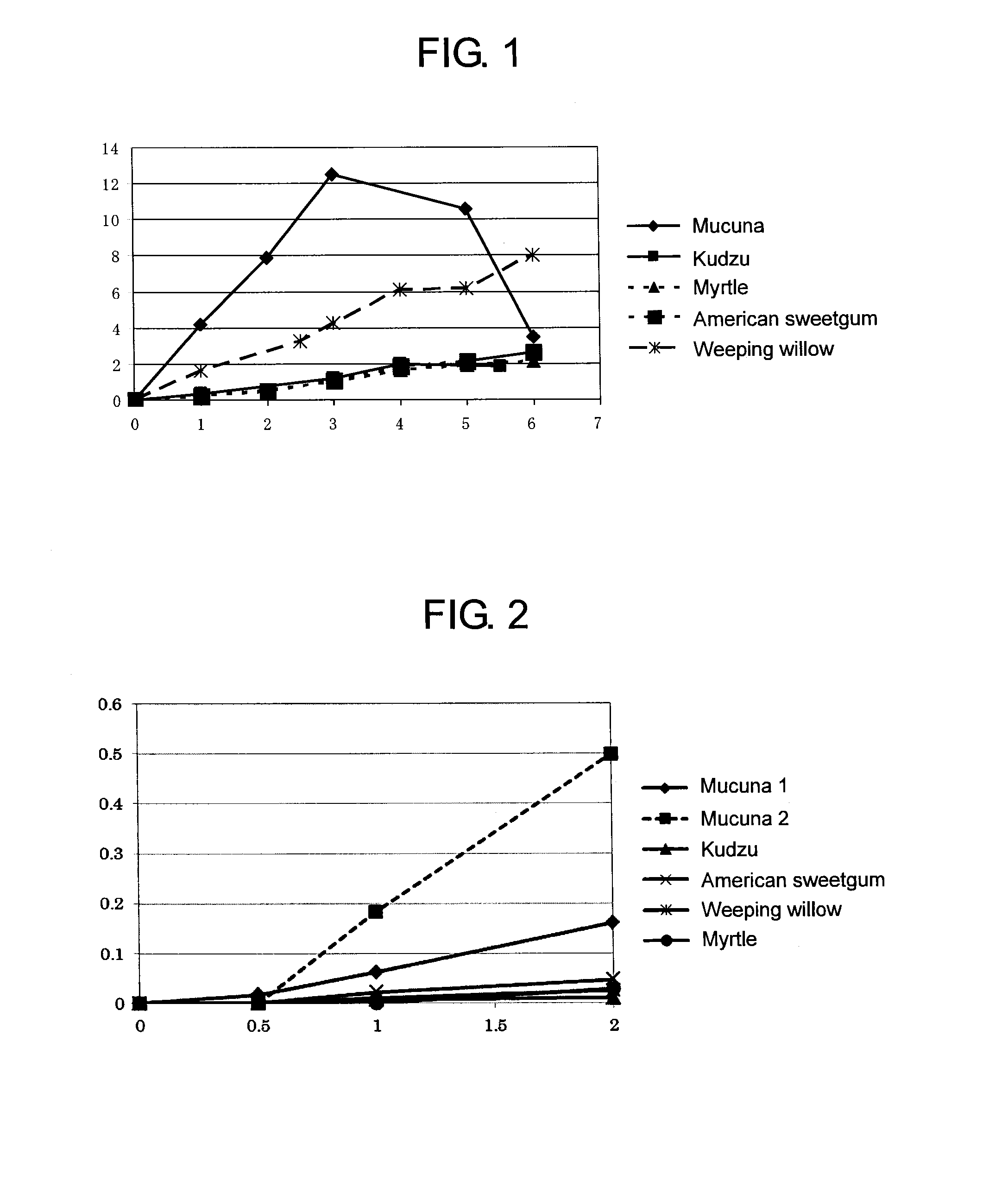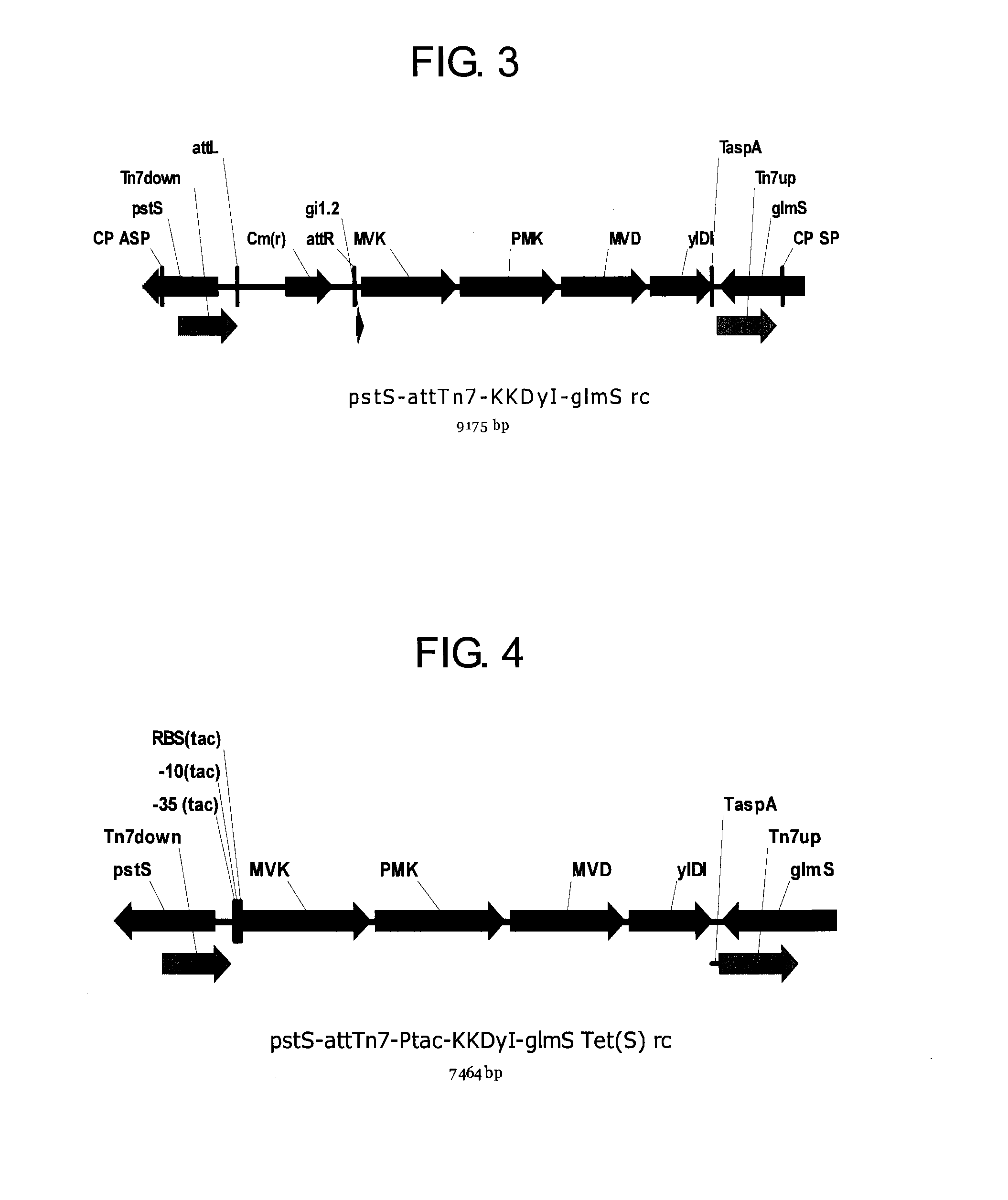Modified isoprene synthase
a technology of isoprene and synthesizer, which is applied in the direction of lyases, carbon-oxygen lyases, enzymology, etc., can solve the problems of difficult to anticipate the increase of natural rubber yield, difficult to increase the yield of natural rubber, and tight supply balance, etc., to achieve excellent isoprene monomer production system
- Summary
- Abstract
- Description
- Claims
- Application Information
AI Technical Summary
Benefits of technology
Problems solved by technology
Method used
Image
Examples
example 1
Design of Modified Enzyme of Isoprene Synthase (IspS) (1) and Analysis of Modified Enzyme of Isoprene Synthase Using Crude Purification Solution
(1-1) Design of Modified Enzyme of IspS
[0162]For efficient screening of modified enzymes, rational modification was carried out exploiting information on steric structure. A gene of IspSM that was isoprene synthetase derived from Mucuna was utilized as an isoprene synthase (IspS) gene. IspSM is an enzyme encoded by a gene where a chloroplast transit signal was deleted in the IspS gene derived from Mucuna (its nucleotide and amino acid sequences are represented by SEQ ID NO:1 and SEQ ID NO:2, respectively) and its codon usage was optimized for E. coli. A nucleotide sequence of a polynucleotide encoding IspSM and an amino acid sequence of IspSM are represented by SEQ ID NO:3 and SEQ ID NO:4, respectively. Since a steric structure of IspSM is unknown, a model structure of IspSM was acquired by a homology modeling method using a steric structure...
example 2
Design of Modified Enzymes of Isoprene Synthase (IspS) and Analysis of Modified Enzymes of Isoprene Synthase by Fermentation Method Using Transformants
(2-1) Construction of Plasmid for Expressing Mutant IspSM
[0176]A mutation was introduced into an IspSM gene by the following procedures. PCR with pSTV-Ptac-IspSM as a template was carried out using primers for mutation introduction and PrimeStar polymerase (supplied from TaKaRa Bio). The nucleotide sequence of the polynucleotide encoding IspSM and its amino acid sequence are represented by SEQ ID NO:3 and 4, respectively as described in Example 1. A reaction solution was prepared according to a composition attached to the kit, and a cycle of 98° C. for 10 seconds, 54° C. for 20 seconds and 72° C. for 300 seconds was repeated 40 times. As a result, a PCR product of the IspSM gene having the introduced mutation was obtained. The resulting PCR product was purified followed by treatment with a restriction enzyme DpnI (TaKaRa Bio). E. coli...
reference example 1
Evaluation of Ability to Produce Isoprene in Plants
1-1) Measurement of Amount of Isoprene Formed Per Unit Weight of Dry Leaves
[0180]First, an amount of isoprene formed per 1 g of dry leaves in the plant was measured for evaluating an ability to produce isoprene in plants. Mucuna (Mucuna bracteata), Weeping willow (Salix babylonica), American sweetgum (Liquidambar styraciflua), Myrtle (Myrtus communis), and Kudzu (Pueraria lobata) were used as the plants.
[0181]In the measurement of an amount of formed isoprene, a gas replaceable desiccator (trade name: Vacuum Desiccator, manufactured by AS ONE Corporation) was housed in an incubator (trade name: Growth Chamber MLR-351H, manufactured by SANYO), and the incubator was set to a high temperature induction condition (an illuminance of 100 μmol E / m2 / s at 40° C.) while a fan for stirring the gas, which was provided in the gas replaceable desiccator, was driven to stir an atmosphere in space in the gas replaceable desiccator. After the temper...
PUM
| Property | Measurement | Unit |
|---|---|---|
| temperature | aaaaa | aaaaa |
| total volume | aaaaa | aaaaa |
| total volume | aaaaa | aaaaa |
Abstract
Description
Claims
Application Information
 Login to View More
Login to View More - R&D
- Intellectual Property
- Life Sciences
- Materials
- Tech Scout
- Unparalleled Data Quality
- Higher Quality Content
- 60% Fewer Hallucinations
Browse by: Latest US Patents, China's latest patents, Technical Efficacy Thesaurus, Application Domain, Technology Topic, Popular Technical Reports.
© 2025 PatSnap. All rights reserved.Legal|Privacy policy|Modern Slavery Act Transparency Statement|Sitemap|About US| Contact US: help@patsnap.com


